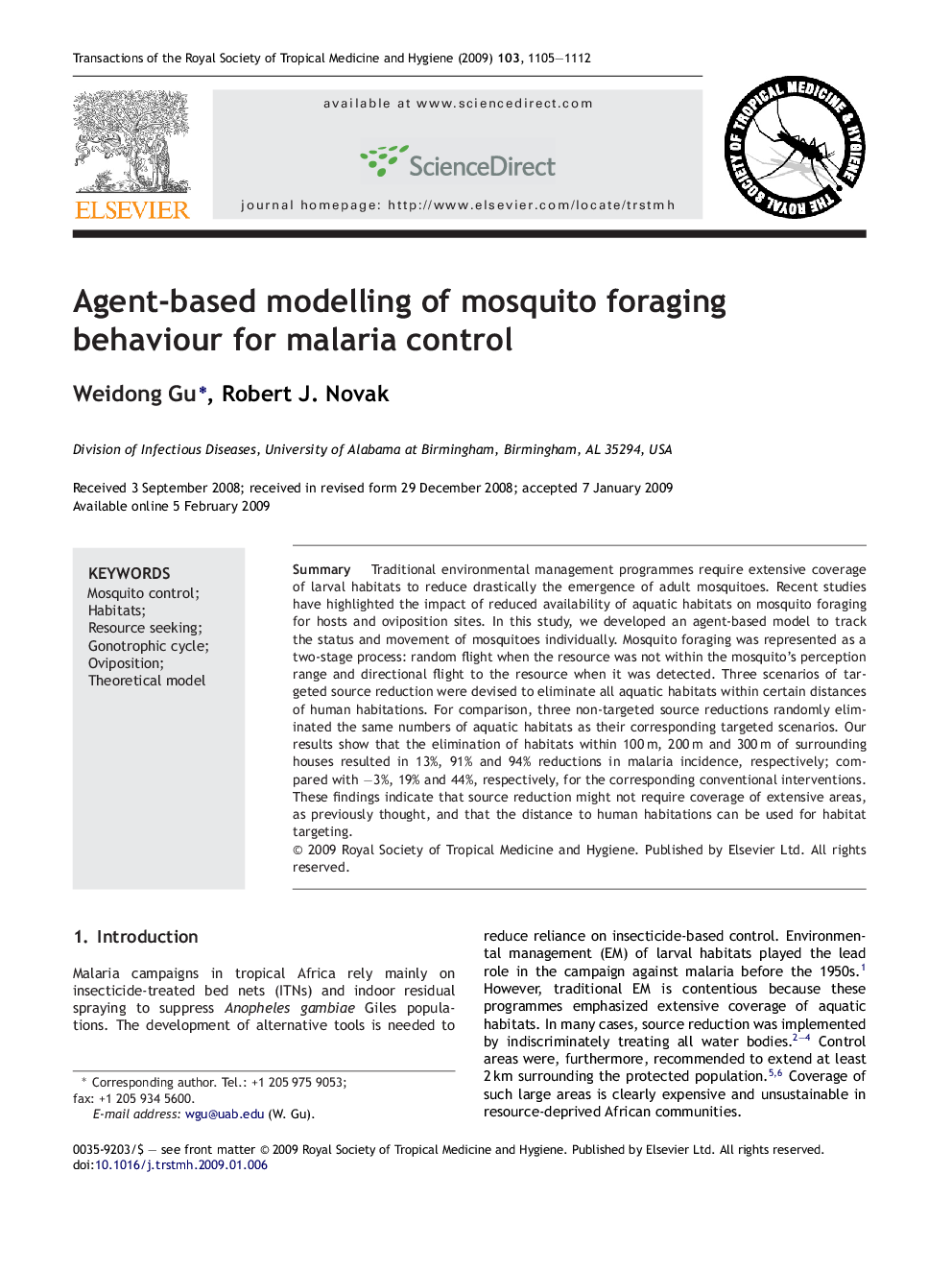| Article ID | Journal | Published Year | Pages | File Type |
|---|---|---|---|---|
| 3420567 | Transactions of the Royal Society of Tropical Medicine and Hygiene | 2009 | 8 Pages |
Abstract
Traditional environmental management programmes require extensive coverage of larval habitats to reduce drastically the emergence of adult mosquitoes. Recent studies have highlighted the impact of reduced availability of aquatic habitats on mosquito foraging for hosts and oviposition sites. In this study, we developed an agent-based model to track the status and movement of mosquitoes individually. Mosquito foraging was represented as a two-stage process: random flight when the resource was not within the mosquito's perception range and directional flight to the resource when it was detected. Three scenarios of targeted source reduction were devised to eliminate all aquatic habitats within certain distances of human habitations. For comparison, three non-targeted source reductions randomly eliminated the same numbers of aquatic habitats as their corresponding targeted scenarios. Our results show that the elimination of habitats within 100Â m, 200Â m and 300Â m of surrounding houses resulted in 13%, 91% and 94% reductions in malaria incidence, respectively; compared with â3%, 19% and 44%, respectively, for the corresponding conventional interventions. These findings indicate that source reduction might not require coverage of extensive areas, as previously thought, and that the distance to human habitations can be used for habitat targeting.
Related Topics
Life Sciences
Immunology and Microbiology
Applied Microbiology and Biotechnology
Authors
Weidong Gu, Robert J. Novak,
